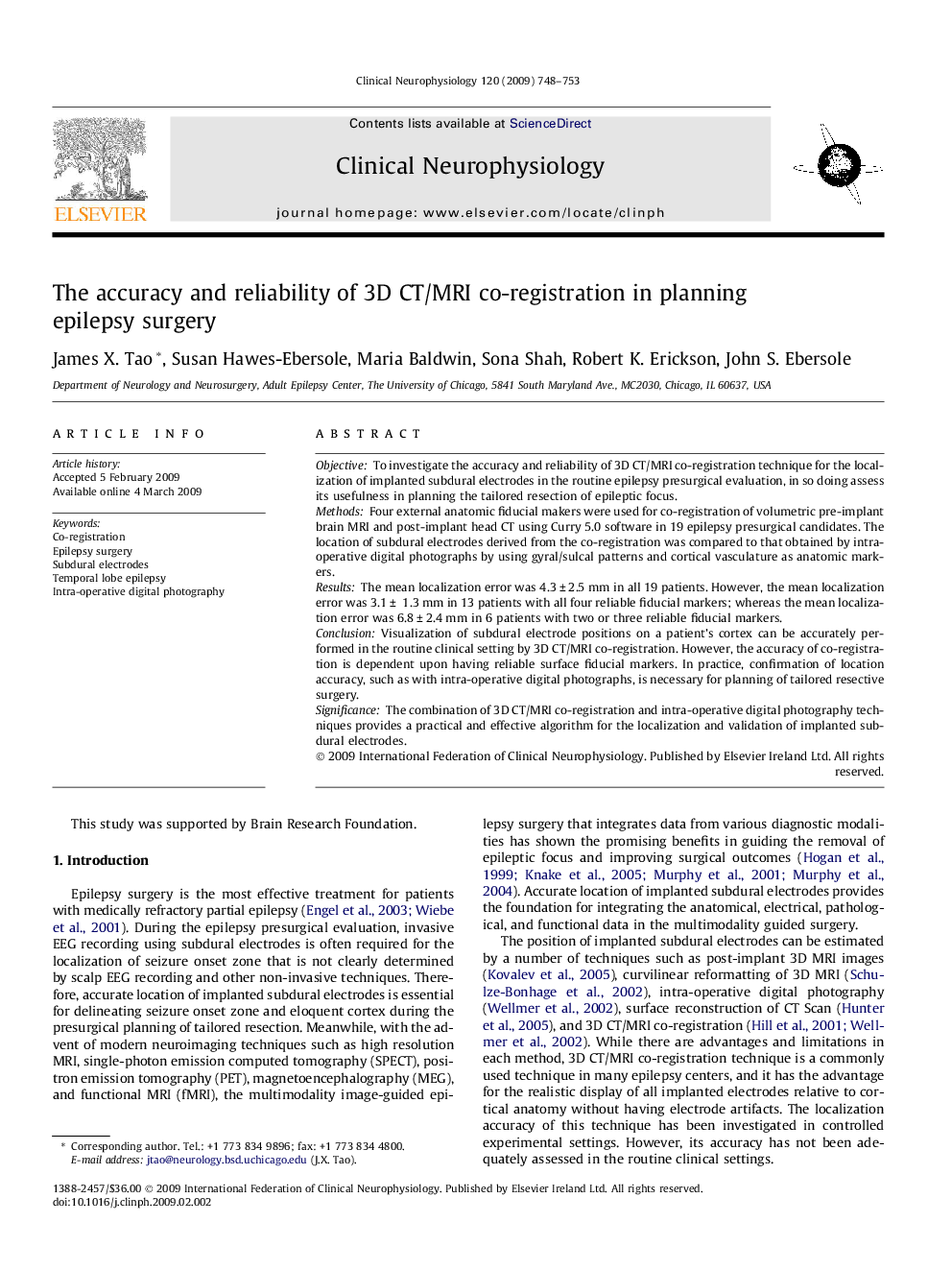| Article ID | Journal | Published Year | Pages | File Type |
|---|---|---|---|---|
| 3046319 | Clinical Neurophysiology | 2009 | 6 Pages |
ObjectiveTo investigate the accuracy and reliability of 3D CT/MRI co-registration technique for the localization of implanted subdural electrodes in the routine epilepsy presurgical evaluation, in so doing assess its usefulness in planning the tailored resection of epileptic focus.MethodsFour external anatomic fiducial makers were used for co-registration of volumetric pre-implant brain MRI and post-implant head CT using Curry 5.0 software in 19 epilepsy presurgical candidates. The location of subdural electrodes derived from the co-registration was compared to that obtained by intra-operative digital photographs by using gyral/sulcal patterns and cortical vasculature as anatomic markers.ResultsThe mean localization error was 4.3 ± 2.5 mm in all 19 patients. However, the mean localization error was 3.1 ± 1.3 mm in 13 patients with all four reliable fiducial markers; whereas the mean localization error was 6.8 ± 2.4 mm in 6 patients with two or three reliable fiducial markers.ConclusionVisualization of subdural electrode positions on a patient’s cortex can be accurately performed in the routine clinical setting by 3D CT/MRI co-registration. However, the accuracy of co-registration is dependent upon having reliable surface fiducial markers. In practice, confirmation of location accuracy, such as with intra-operative digital photographs, is necessary for planning of tailored resective surgery.SignificanceThe combination of 3D CT/MRI co-registration and intra-operative digital photography techniques provides a practical and effective algorithm for the localization and validation of implanted subdural electrodes.
